#Yumeji Tsukioka
Text











FOREVER A WOMAN (1955) dir. KINUYO TANAKA
27 notes
·
View notes
Text


I can die in your arms.
#The Eternal Breasts#Forever a Woman#kinuyo tanaka#Fumiko Nakajō#Yumeji Tsukioka#Ryōji Hayama#Japanese drama film#movie scene#scenephile#movie quotes#film quotes#movie scenes#film scene
9 notes
·
View notes
Photo

Shinsetsu (Gosho Heinosuke, 1942)
#shinsetsu#new snow#gosho heinosuke#heinosuke gosho#yumeji tsukioka#tsukioka yumeji#gif#1942#japanese cinema#japanese movies#japanese film
5 notes
·
View notes
Photo
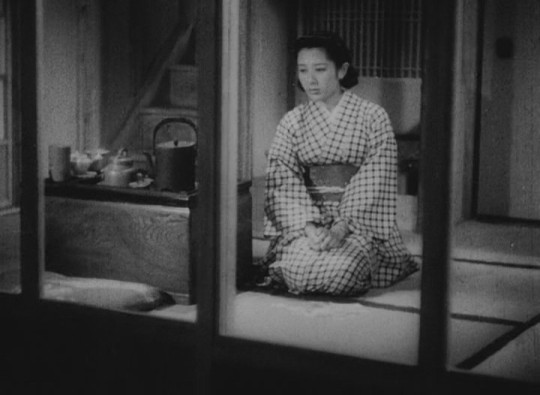
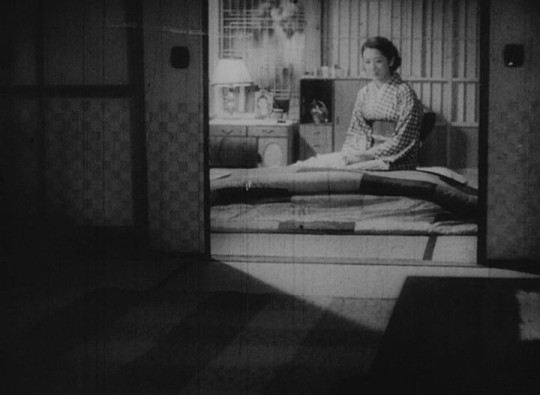

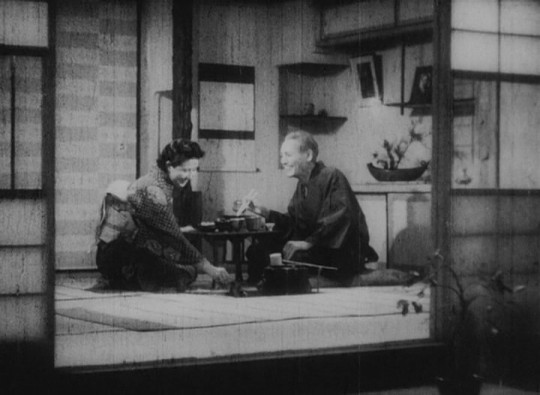
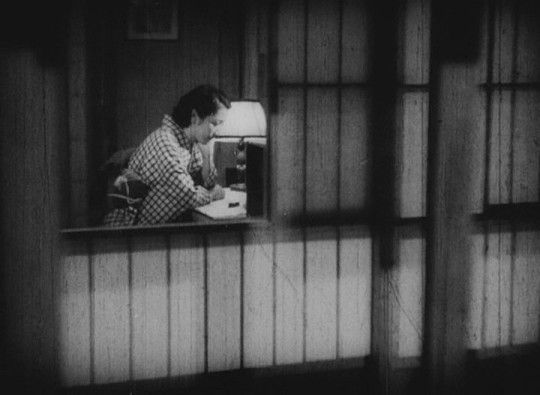
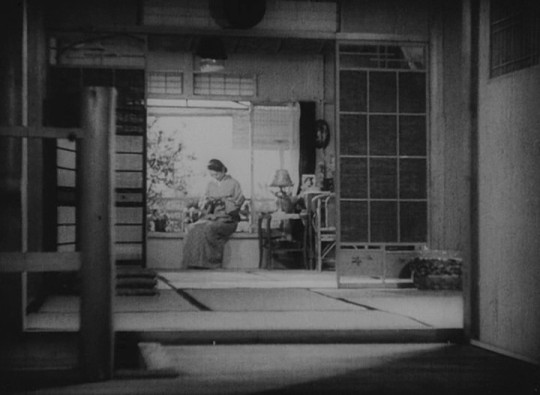
Shinsetsu (Gosho Heinosuke, 1942)
#shinsetsu#gosho heinosuke#heinosuke gosho#1942#yumeji tsukioka#tsukioka yumeji#japanese cinema#japanese movies#japanese film#new snow
0 notes
Text

Twenty-Four Eyes (Keisuke Kinoshita, 1954)
Cast: Hideko Takamine, Chishu Ryu, Takahiro Tamura, Yumeji Tsukioka, Toshiko Kobayashi, Toshio Takahara, Shizue Natsukawa, Kumeko Urabe. Screenplay: Keisuke Kinoshita, based on a novel by Sakae Tsuboi. Cinematography: Hiroshi Kusuda. Art direction: Kimihiko Nakamura. Film editing: Yoshi Sugihara. Music: Chuji Kinoshita.
One of the most unabashedly sentimental movies you'll ever see, Twenty-Four Eyes may also be one of the most effective anti-war movies, without presenting bloody scenes of people being killed and maimed. Hideko Takamine plays Oishi, a young teacher who begins her career in 1928 on Shodo Island in the Inland Sea of Japan, teaching a first-grade class of 12 -- six boys and six girls -- the 24 eyes of the film's title. We follow her life, and through her point of view the lives (and some deaths) of her first pupils, for the next 18 years, as the world and the war encroach upon a peaceful, pastoral setting. Where Kinoshita's Morning for the Osone Family (1946) was claustrophobic in its presentation of life during wartime, Twenty-Four Eyes shows how the entrapment of people by war can occur in a place where there are no visible signs of the conflict. The natural setting remains undisturbed. No planes fly overhead, no bombs are dropped on the village, but the menace of war threatens the minds and hearts of the most vulnerable: the children Oishi teaches. The most chilling scenes are the ones in which young men are sent off to the war, as flag-waving crowds sing bloodthirsty tributes to the glory of dying in battle for their country. Kinoshita and cinematographer Hiroshi Kusuda reinforce the bitter irony by their restraint. They don't darken the atmosphere: It's the same lovely natural setting. Only the human beings in it have changed. I have to admit to feeling the movie is overlong, and that Kinoshita ladles on the pathos a bit too heavily. The cast weeps floods of tears, and the soundtrack features not only the Japanese folk songs that the children learn but also some old-fashioned Western parlor songs: "Annie Laurie," "The Last Rose of Summer," "Home, Sweet Home," "Auld Lang Syne," and, most curiously, "What a Friend We Have in Jesus." But repress the cynic or the realist, and you may find it moving, too.
2 notes
·
View notes
Photo
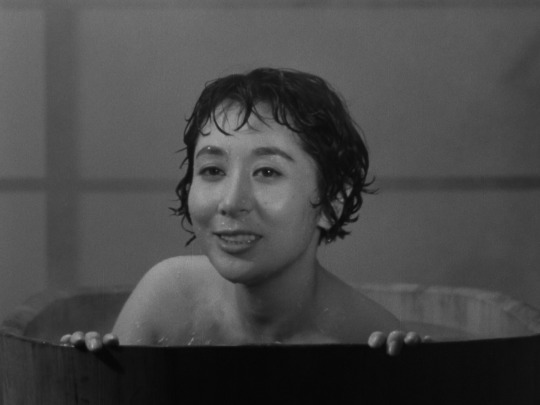
Forever a Woman (Chibusa yo eien nare), Kinuyo Tanaka (1955)
#Kinuyo Tanaka#Sumie Tanaka#Yumeji Tsukioka#Ryôji Hayama#Junkichi Orimoto#Hiroko Kawasaki#Shirô Ôsaka#Tôru Abe#Masayuki Mori#Kumenobu Fujioka#Takanobu Saitô#1955#woman director
27 notes
·
View notes
Photo

Late Spring, 1949 (dir. Yasujirō Ozu)
49 notes
·
View notes
Photo

Seen in 2020:
Til We Meet Again (Yuzo Kawashima), 1955
#films#movies#stills#Til We Meet Again#Yuzo Kawashima#Michiyo Aratama#Yumeji Tsukioka#Japanese#1950s#seen in 2020#Mubi
5 notes
·
View notes
Text

Late Spring (1949) Yasujiro Ozu
07-09-2019
Charming and quite forward thinking with feminist themes. Wonderfully paced and framed
#late spring#1949#yasujiro ozu#japan#chishu ryu#setsuko hara#yumeji tsukioka#haruko sugimura#hohi aoki#jun usami#kuniko miyake
1 note
·
View note
Photo

Press photo for Ginza Daughter (Ginza Reijo, 銀座令嬢), 1955, directed by Manao Horiuchi (堀内真直) and starring Yumeji Tsukioka (月丘夢路).
505 notes
·
View notes
Photo





Top 5 March 2017
1. Frágil Como o Mundo (a.k.a. Fragile As The World) (Rita Azevedo Gomes, 2002)
2. The Eternal Breasts (a.k.a. Chibusa yo eien nare) (Kinuyo Tanaka, 1955)
3. Birth (Jonathan Glazer, 2004)
4. Viva la vie (Claude Lelouch, 1984)
5. Umberto D. (Vittorio De Sica, 1952)
#Films watched in 2017#top 5#march 2017#Frágil como o mundo#The Eternal Breasts#Birth#Viva la vie#Umberto D.#Rita Azevedo Gomes#Kinuyo Tanaka#Jonathan Glazer#Claude Lelouch#Vittorio de Sica#faces#beauty#Evelyne Bouix#Nicole Kidman#Maria Pia Casilio#Maria Gonçalves#Yumeji Tsukioka
69 notes
·
View notes
Photo



Chibusa yo eien nare (Tanaka Kinuyo, 1955)
#chibusa yo eien nare#the eternal breasts#tanaka kinuyo#kinuyo tanaka#yumeji tsukioka#tsukioka yumeji#1955#japanese cinema#japanese film#japanese movies
17 notes
·
View notes
Text
I´m quickly becoming enthralled by Yuzo Kawshima´s portraits of social mores in post-war Japan. In Till We Meet Again, the problem is patriarchy: ‘men only want to treat women as pets’ says Yachijo (Yumeji Tsukioka) to her father Kaji (So Yamamura). Kaji has been ignoring his wife Shigeno (Fukuko Sayo) since they got married. She´s taken refuge in her cat. Kaji himself has rescued a girl, Kyoko (Michiyo Aratama) from the red light district and set her up in a boutique: she´s in love with him but it´s not reciprocatedl His daughter Yachigo is unhappily married to Kappei (Tatsuya Mihashi) and she´s soon falling in love with a bumbling scientist she met on the train, Sone (Rentaro Mikuni). Meanwhile Kappei himself will meet and fall in love with Kyoko. It´s a sexual roundelay shot as a chamber-piece with modernity as a backdrop.
So far, so typical of 1950s melodramas. As you can see in the sub-titles of the images below, the phrases are stock ones we´ve seen and heard and been witness to dramatisations of all of our lives:
But it´s the treatment of these, the way they speak of modernity, westernisation, individual fulfilment against social conscription, the very idea that happiness matters, that is so beautifully realised here. The shots are all small scale, intimate, the camera holding characters against a background like in a trance as couples form, re-form, as individuals struggle between personal desires and social constraints, all done low-key, restrained, not contained, articulated but in a gentle fashion. All these characters want is to have someone to talk to and pierce through the isolation coupledom has enchained them in, to share, to be themselves valued. The patriarch, who has always done what he wants, finds these concerns unfathomable. But the younger generation, will act on their desires, in a gentle way. I love the attention to detail in Kawashima´s films, the slow revelations, how they´re feminist but tactful in their critiques. This is a lovely film and very moving.
Modernity vs Tradition:
José Arroyo
Till We Meet Again (Yuzo Kawashima, Japan, 1955) I´m quickly becoming enthralled by Yuzo Kawshima´s portraits of social mores in post-war Japan. In Till We Meet Again…
#Michiyo Aratama#post-war Japan#Rentaro Mikuni#Tatsuya Mihashi#Till We Meet Again#Yumeji Tsukioka#Yuzo Kawshima
1 note
·
View note
Photo

"1957 motor show. Yumeji Tsukioka, an actress, is riding the "Fuji Cabin," an ultra-compact car with two front wheels and one rear wheel announced by Fuji Motor Co., Ltd. in 30 years. Surrounding are the campaign girls of the time. (Magazine House "Mediocre Treasure Photo Studio")" Text by 島倉千代菊@wataridori333
53 notes
·
View notes
Photo

Hohi Aoki and Setsuko Hara in Late Spring (Yasujiro Ozu, 1949)
Cast: Chishu Ryu, Setsuko Hara, Yumeji Tsukioka, Haruko Sugimura, Hohi Aoki, Jun Usami, Kuniko Miyake, Masao Mishima, Yoshiko Tsubouchi, Yoko Katsuragi, Toyo Takahashi, Jun Tanizaki. Screenplay: Kogo Noda, Yasujiro Ozu, based on a novel by Kazuo Hirotsu. Cinematography: Yuharu Atsuta. Art direction: Tatsuo Hamada. Film editing: Yoshiyasu Hamamura. Music: Senji Ito.
The opening of Yasujiro Ozu's Late Spring is deceptively calm: the usual establishing shots of landscape and buildings and trains, the kind of images with which Ozu typically punctuates his narratives, and a group of women gathering for a tea ceremony. One of the women is Noriko, whose brilliant smile is also deceptive. This is the first film in Ozu's so-called "Noriko trilogy," to be followed by Early Summer (1951) and Tokyo Story (1953), in each of which Setsuko Hara plays a woman named Noriko. The three Norikos have nothing in common except that they are all unmarried. (In Tokyo Story she is a widow.) The Noriko of Late Spring lives with her father, Shukichi, who is played by Ozu regular Chishu Ryu. (In Early Summer, Ryu plays Hara's brother, and in Tokyo Story her father-in-law.) The deceptions of what might be called the "get-acquainted" section of Ozu's film, which establishes for us the relationships among the characters, lie in the apparent happiness and contentment of father and daughter and the untroubled world in which they live. But Late Spring was filmed only four years after the end of the war that devastated Japan, which was still under occupation by American forces. The wounds and pain of the country and its people are invisible in the film, partly because of occupation censorship, but they provide a kind of tension in the viewer who knows what the characters must have suffered. There is only a brief mention of this in Late Spring: Noriko has been to the doctor and reports that her health has improved. Another character's reference to "forced work during the war" sheds some light on what may have caused her illness. Later, Noriko and her father visit Kyoto, and he remarks how much nicer it is than "dusty" Tokyo, obliquely referencing wartime destruction. The central deception, however, lies in Noriko's apparent contentment with her unmarried state: She feels it is her duty to spend her life caring for her widowed father, and brushes off any suggestions that at 27 she should really be thinking about getting married -- or worse, that her father might choose to remarry. She calls the second marriage of one of her father's friends "filthy." We who have seen this situation before, however, realize that the deception Noriko is perpetrating is on herself. Perhaps because she has lived through so much change and upheaval, Noriko is trying to persuade herself that her current happiness serving her father can be made permanent. And so she suffers a shock when her father displays interest in a beautiful widow, and another when he suggests that she might meet the young man her Aunt Masa (Haruko Sugimura ) thinks would be a suitable husband for Noriko. What Ozu and his frequent collaborator Kogo Noda establish here, working from a novel called Father and Daughter by Kazuo Hirotsu, is worthy of Henry James or Jane Austen -- I think particularly of Austen's Emma Woodhouse and her self-deluding attachment to her father. Eventually, Noriko is persuaded into marriage -- in a masterstroke of direction we never even see the groom -- by her father's lie: He claims that he has been planning to remarry, thereby eliminating any objection Noriko could have to seeking her own path to fulfillment. The film ends with a melancholy image of Shukichi alone, peeling an apple -- a kind of Jamesian twist on an Austenian situation. This magisterial example of Ozu's late style -- low camera angles, absence of pans and dissolves, emphasis on the somewhat claustrophobic interiors of the Japanese home -- is reinforced by Tatsuo Hamada's art direction and Yuharu Atsuta's cinematography, but most of all by the superb performances of Hara and Ryu.
2 notes
·
View notes
